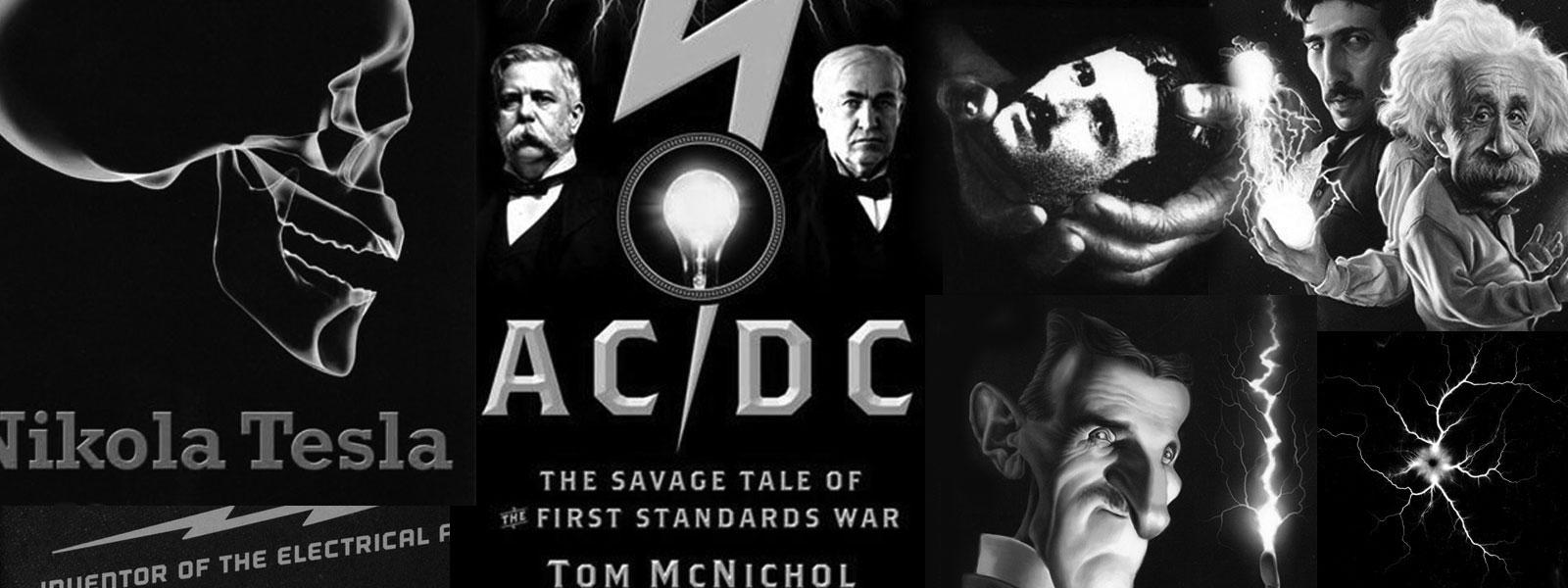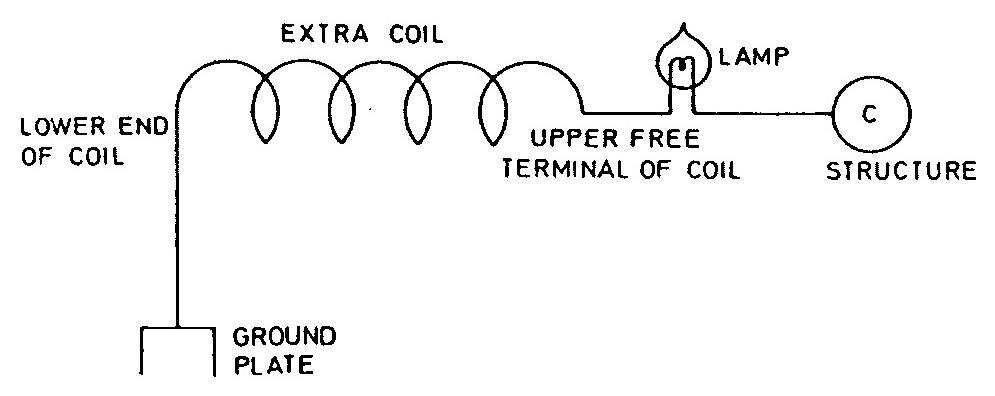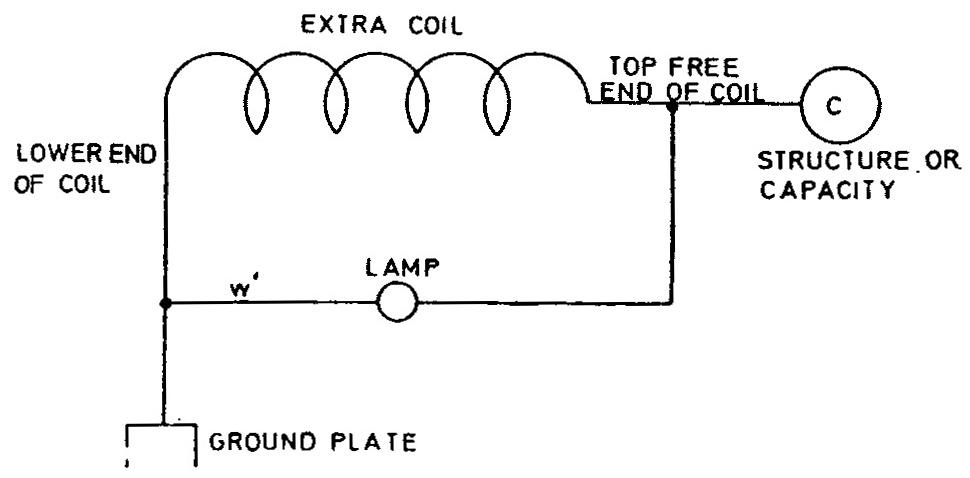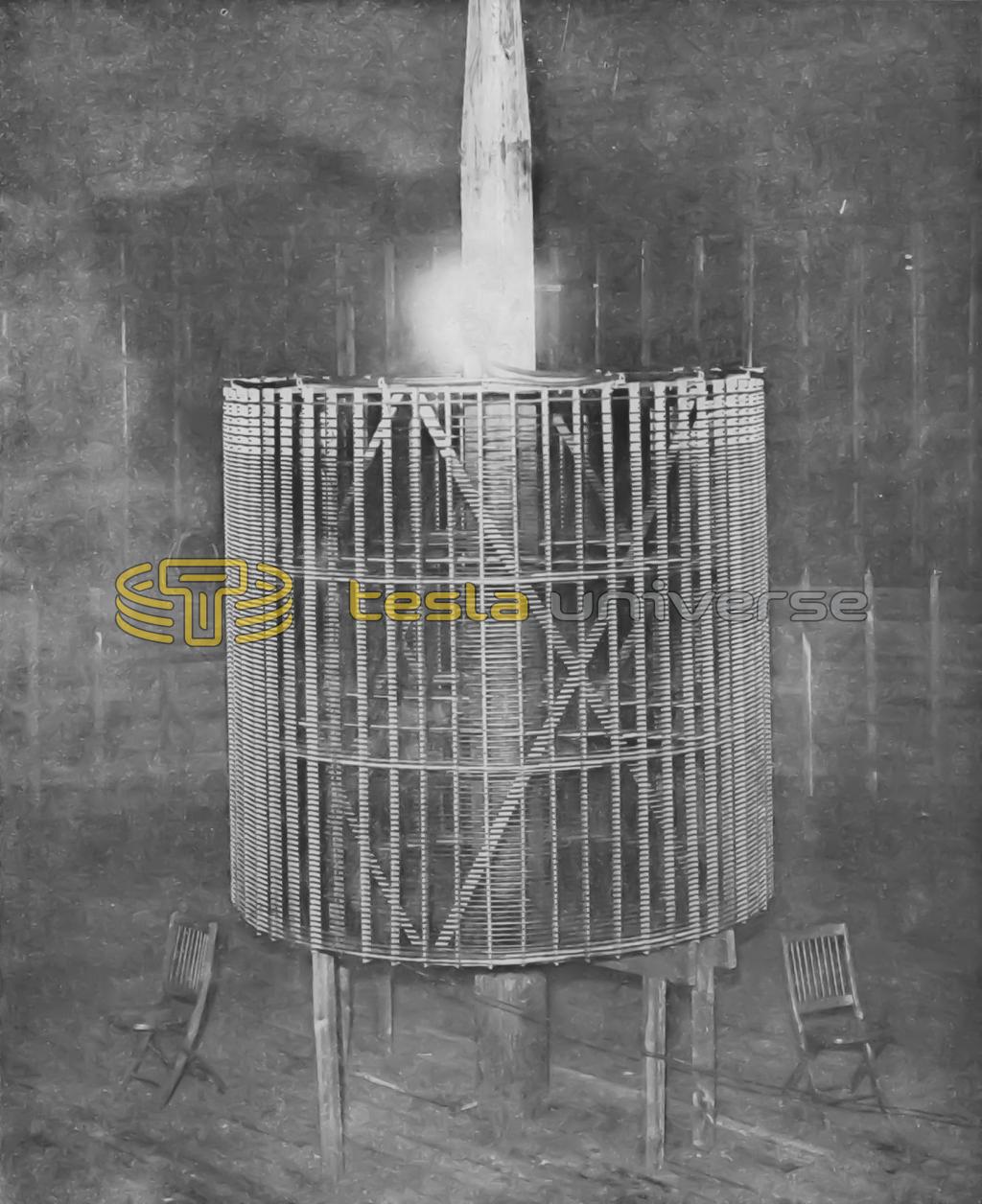
Nikola Tesla Books
Related content from pages
This will be apparent from another photograph which is marked XXVIII. In this instance the same connections were used as before, only the free terminal of the lamp was connected by a wire to the structure of iron pipes above. The wire can be scarcely distinguished. In this experiment resonance with the exciting circuit was obtained with 6 tanks on each side, this would mean a capacity of three tanks or 108 bottles = 108 x 0.0009 = 0.0972 mfd.
The inductance of the exciting circuit comprised a primary
turn with secondary short-circuited = 41,000 cm, as before, and all the turns of the regulating coil with connections, that is about 85,000 cm, giving total inductance at 41,000 + 85,000 = 126,000 cm or = $! {126 \over 10^{6}} $! henry. From this follows
$! {{2 \pi \over 10^{3}} \sqrt{0.0972 \times {126 \over 10^{6}}}} $! = $! {{2 \pi \over 10^{6}} \sqrt{12.2472}} $! = $! {{6.28 \times 3.5} \over 10^{6}} $! = $! {21.98 \over 10^{6}} $!
and
n = 45,496 or approx. 45,500 = n.
As will be seen from the consideration of the diagram above, in this experiment the entire energy supplied to the structure or capacity C had to pass through the lamp. Suppose the latter to consume 50 watts, and taking the capacity C with reference to previous estimates roughly at 500 cm. with the protecting hood, and designating with P again the potential to which the structure is charged, we have
50 = $! {{500 \over {9 \times 10^{11}}} \times {{p^{2} \times 45,500 \times 2} \over 2}} $! or P2 = $! {{9 \times 10^{8}} \over 455} $!
and
P = $! {{3 \times 10^{4}} \over \sqrt{455}} $! = $! {{3 \times 10^{4}} \over 21.3} $!
approx. or = 1409 volts = P, which is a very small pressure indeed. This pressure could have been, of course, still further reduced by using a resonating circuit of still higher frequency. In the manner just described and illustrated a great many lamps could have been lighted by the vibrations transmitted to the ground and some of the facts pointed out before will enable one to make an approximate estimate in this respect. However, by connecting the âextra coilâ as in normal operation, that is, to the free end of the secondary instead of to the ground, a number of lamps might have been lighted corresponding to the full output of the oscillator, say, one thousand lamps or more. Even through the ground, as in the experiment described, the action of the exciting circuit was so intense that the current of the supply transformers had to be cut down to but a very small fraction of the current taken by full output.
It should be remarked that also in the experiment described before (Plate XXVII.) a considerable number of lamps might have been lighted, but not nearly as many as in the case presently described, owing to the very small capacity of the lamps, as before stated.



